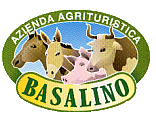|
 |
Florence
The historic city centre (centro storico)
is most representative of Florence. The layout of the district
follows a road system created by the Romans (known as the
'cardo' and 'decumano' system). In the centro storico, you
will see the enormous, imposing structure of the Duomo,
with its Brunelleschian cupola, a beautiful dome that adds
splendour to the city skyline. The city has also preserved
its medieval network of streets, lined with regular, geometric
Renaissance palaces such as Palazzo Strozzi and Palazzo
Medici-Riccardi, which once belonged to Florence's powerful,
oligarchic families. Florence is divided into five districts
and the centre is divided into four sections (San Giovanni,
Santa Croce, Santa Maria Novella and Santo Spirito Oltrarno).
Here is a brief guide to the city and its districts:
San Giovanni takes its name from St John the Baptist,
Patron of Florence, in whose honour the Baptistery was built.
This area covers most of the historic city centre and is
now full of exclusive boutiques that are concentrated in
a few of the most well known streets, such as Via Calzaiuoli.
The university and the Tribunale di Firenze (which is housed
in the Complesso di San Filippo Neri) are also in this district.
|
 |
Santa Maria Novella is named after the Santa Maria
Novella church - a Dominican basilica and important cultural
centre during the Middle Ages. The train station of the same
name (designed in the 1930s by the young architect Michelucci)
is also situated nearby. Not far from the station is the Basso
Fortress, which is now used as an important centre for conferences,
conventions and exhibitions. The zone is also home to the
Parco delle Cascine, one of the city's green oases. In this
area lies Via Tornabuoni, a street which is famous for being
home to some of Italy's most prestigious designer boutiques
e.g. Versace and the Florentine Ferragamo.
|
|
Santa Croce is named after Santa Croce
church, a medieval Franciscan basilica. The National Central
Library (built in the tenth century) is also located here.
Santo Spirito Oltrarno stretches from San Frediano
to San Niccolò Oltrarno, but its heart is probably the Piazza
Santo Spirito, which has retained much of its historic charm
and is filled with artist's workshops. This piazza is the
place for parties on summer evenings, bringing together young
Florentines and foreigners, many of whom live in this area.
The Pitti Palace with its old Medicean garden and the Boboli
Garden, are both in Oltrarno. The famous Piazzale Michelangelo
(with its incredible view) is also in this district. From
here, it is possible to see one of the few remaining stretches
of medieval wall around the Belvedere Fort that was spared
from demolition in the nineteenth century.
|
 |
Campo di Marte is home to many historical
buildings dating back to the turn of the century, as well
as to many modern stone and cement apartment blocks which
were built from the fifties onwards. There are also numerous
sports venues, several swimming pools and the Franchi Stadium.
Fiesole, and the Bellariva zone are close by; these are swathes
of Piagentina countryside that always induced feelings of
nostalgia in Tuscan painters.
Gavinana is south of the Arno and leads to the well-known
Chianti wine region. On the southwestern side lies Galluzo,
famous for its Carthusian monastery.
Isolotto e Legnaia combines areas of the city that
were developed during the sixties and seventies and are still
expanding. The 'Isolotto' district was once the scene of various
clashes and social unrest during the sixties.
Rifredi is in the northwestern part of the city and
is a place of contrasts; home to many beautiful country villas
as well as industrialized residential areas and host to many
Chinese and African immigrants. The influx of immigrants means
that even a city like Florence cannot live forever in the
past but must create a new multi-ethnic history. |
| |
|
|
